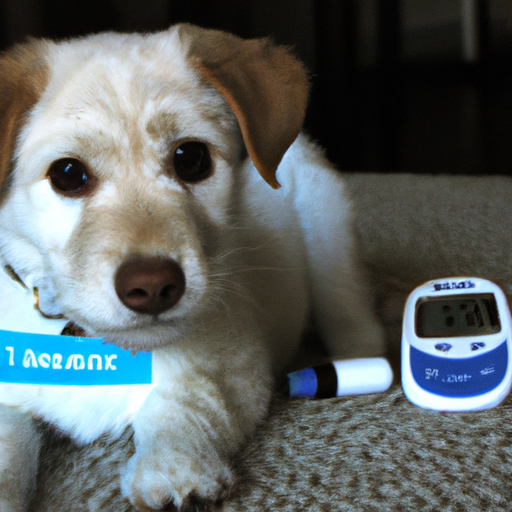Diabetes in puppies is a serious matter that requires your undivided attention. As a caregiver, it’s not only your responsibility but your passion to ensure the health and wellness of your furry friend. This guide will help you understand what diabetes is, how to recognize symptoms, the treatment options available, and how to manage the condition in the long run.
1. Understanding Diabetes in Puppies
Diabetes in puppies is often referred to as juvenile diabetes. This is a chronic condition where your puppy’s body either doesn’t produce enough insulin or doesn’t use it effectively, resulting in high blood sugar levels.
Just like in humans, insulin plays a crucial role in helping your puppy’s body use glucose for energy. Without it, glucose builds up in the blood, leading to a host of health problems.
2. Recognizing the Symptoms
As a caregiver, you need to be vigilant about your puppy’s health. Regular check-ups are essential, but you also need to be aware of any unusual behavior or changes in your furry friend’s routine. Here are some common symptoms you should be on the lookout for:
- Excessive thirst and urination
- Increased hunger while losing weight
- Lethargy
- Cloudy eyes
- Recurring infections
If your puppy exhibits any of these symptoms, it’s crucial to get them to a vet as soon as possible.
3. Diagnosis Process
Diagnosing diabetes in puppies involves blood and urine tests. The vet will look for high levels of glucose in the blood and urine, a condition known as hyperglycemia and glucosuria, respectively.
The vet may also conduct additional tests to rule out other health conditions that might mimic the symptoms of diabetes, such as pancreatitis or urinary tract infections.
4. Treatment Options
While diabetes is a lifelong condition, your puppy can still live a happy, healthy life with the right treatment and management. The two primary treatment options are:
-
Insulin therapy: This involves daily injections of insulin to help regulate your puppy’s blood sugar levels. It’s crucial to follow the vet’s instructions on dosage and timing.
-
Dietary changes: The vet might recommend a diet high in fiber and complex carbohydrates to help control blood sugar levels. Regular, controlled feeding times are also essential.
5. Long-Term Management
Managing diabetes in puppies is a lifelong commitment. It involves regular vet visits, insulin injections, and dietary changes. Here are some tips for long-term management:
-
Regular check-ups: Regular blood and urine tests are necessary to monitor your puppy’s blood sugar levels and adjust the treatment as needed.
-
Consistent feeding times: Regular feeding times can help regulate your puppy’s blood sugar levels.
-
Regular exercise: Regular physical activity can help control your puppy’s weight and insulin response.
-
Monitoring symptoms: Always be vigilant about any changes in your puppy’s behavior or routine.
6. Potential Complications
If left untreated, diabetes can lead to serious health complications, including:
- Cataracts and blindness
- Kidney disease
- Nerve damage
- Ketoacidosis, a life-threatening condition
With proper management, however, these complications can be prevented or delayed.
7. Resources for Caregivers
As a caregiver, it’s essential to have a support system and resources to help manage your puppy’s condition. Look for local pet diabetes support groups where you can share experiences and tips with other caregivers. There are also numerous online resources and forums where you can get advice and support.
8. Frequently Asked Questions
Here are some commonly asked questions about diabetes in puppies:
Q: Can diabetes in puppies be cured?
A: No, there is currently no cure for diabetes in puppies. However, it can be managed with the right treatment and lifestyle changes.
Q: How long can a puppy live with diabetes?
A: With proper management, a puppy with diabetes can live a normal lifespan. The key is early detection and consistent management.
Q: Can diabetes be prevented?
A: While there’s no surefire way to prevent diabetes, maintaining a healthy weight and diet, regular exercise, and regular vet check-ups can help reduce the risk.
Q: Is a diabetic puppy in pain?
A: Diabetes itself does not cause pain, but complications from unmanaged diabetes, such as nerve damage, can cause discomfort.
Remember, as a caregiver, your love and commitment make a world of difference in managing your puppy’s diabetes. With your dedication and the right resources, your furry friend can lead a happy and healthy life.



